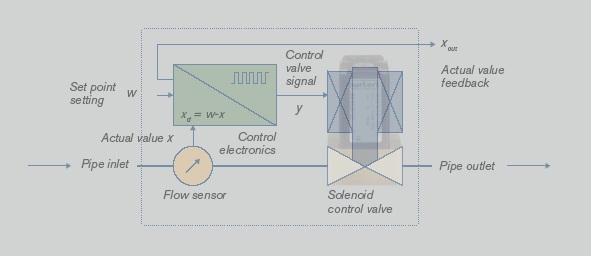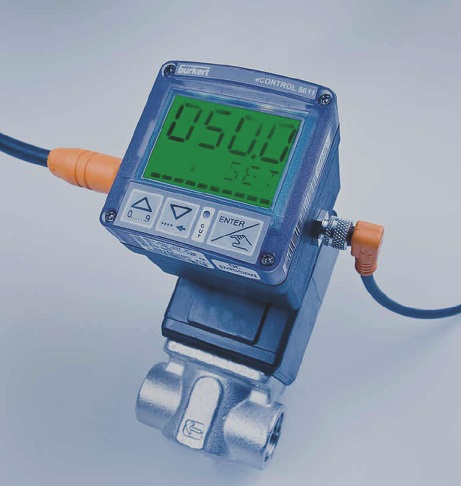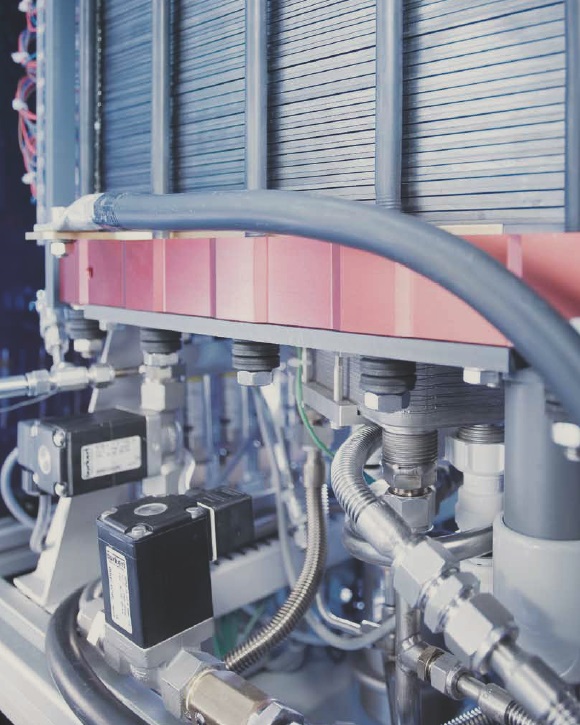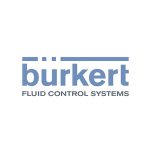A Tutorial on Solenoid Control Valves by fluid control experts
Solenoid Control Valves are used in critical and demanding applications throughout the Process Industry. You will find solenoid control valves in electronic devices in analytical or medical technology, in burner controls, in cooling loops, in fuel dosing systems, in fuel cell technology and in compact flow controllers. Solenoid control valves offer precision, accuracy, reliability, reduced noise emission and longevity.
Experts in fluid control & measurement, Bürkert, provide us with frequently asked questions regarding solenoid control valves (otherwise known as ‘proportional valves’) and their application.
What are Solenoid Control valves?
Solenoid control valves are electromagnetic plunger valves which control flow rates of liquids or gases.

How do solenoid control valves work?
They open with certain stroke positions – dependent on the valve control signal.
Two forces counter one another in the valve: the spring force and the force by a proportional solenoid. Without a power supply the spring pushes the plunger directly on to the valve seat, which keeps the valve outlet closed. But when power is supplied to the solenoid, the plunger rises. The valve opens, and the fluid passes through.
How are solenoid Control valves different to other control valves?
Control valves are operated in different ways: pneumatically, electro-motorized, piezo-electrically and electro-magnetically.
The various drive principles essentially differ in price, size, type of media separation, dynamics and force properties.
Electro-magnetically activated control valves are called "solenoid control valves" or "proportional valves".
When are solenoid control valves used?
Solenoid control valves are used as metering valves in closed control loops. The valve eliminates the difference here between the reference and actual value of the mapped process value (see diagram below). However solenoid control valves – depending on valve type and application – are also used in open control loops in which the valve is operated without any feedback of the actual process value.

Selecting the correct solenoid control valve for your application
For correct and accurate control functioning, solenoid control valves must be configured and selected according to their special purpose. The most important parameters for selecting a solenoid control valve are, on one hand, the Kv value (given in cubic meters per hour) and, on the other hand, the application’s pressure range.
The lower the valve’s orifice or the stronger the coil, the higher the pressure the valve can shut-off. The highest Kv value needed is calculated on the basis of the following parameters:
- Valve inlet pressure
- Valve outlet pressure
- The fluid’s density
- Maximum flow rate required
- The fluid’s temperature.
On the basis of the calculated Kv value and the pressure range of the planned application, a correspondingly appropriate valve type and its required orifice can be determined.
Please note: The application’s Kv value must be lower than the valve’s Kvs value that is reached at maximum opening.

Checklist for choosing the correct solenoid control valve
1.What medium (fluid) do you want to control?
With regard to its chemical-physical reaction behaviour, it must be checked whether the valve parts in contact with the medium are compatible with the medium itself.
2. How high is the maximum operating pressure?
The valve must be able to shut off the highest pressure in the application.
3.What are the process data?
For optimal sizing of the valve orifice there are some issues to be cleared up. At first there is the scope of the required maximum flow rate, Qnom, which typically has to be controlled. The valve’s maximum flow rate can, however, actually be higher, and the figures of the pressure values at Qnom must be measured immediately before and after the valve (p1, p2). These values are often not identical to the inlet and outlet pressure of the overall system, because additional flow resistances have an effect both before and after the valve (pipes, shut-off valves, nozzles, etc.). If the inlet (p1) and outlet pressure (p2) cannot be determined, both must be estimated taking all pressure drops into account. Information on the medium temperature (T1) and the standard density (pN) of the medium at 273 Kelvin (0 °C) and 1013 mbar (1 bar) also helps in calculating the valve orifice. Whether or not the minimum flow rate can be adjusted (Qmin) is checked using the achievable turn-down ratio of the valve considered.
Features and Benefits of Bürkert’s solenoid control valves

With over 30,000 products in their portfolio and over 60 years’ engineering experience, Burkert claim to be market leaders in this segment. Burkert engineers have translated their experience with fluids into practical application, they have conducted internal research and market research and have responded to customer feedback – all to bring you more efficient, more innovative process valves.
|
Features |
Benefits |
|
Simple, compact and direct-acting, without position feedback
|
Cost-effective design, Very fast reaction |
|
Guiding of plunger with flat spring
|
Extremely good repeatability resulting in reliable setting of processes again and again, Very good sensitivity, high span |
|
Epoxy resin moulded coil, tight encapsulation of the valve system
|
High protection class (IP 65), safety |
|
PWM control
|
Lower hysteresis, Static friction prevented, Very good response sensitivity |
|
Seat seal integrated in the plunger
|
Close tight function, no additional shut-off valve required |
For more information about Bürkert Solenoid Valves visit their PIF profile or ask their technical experts a question in the Solution Centre.
Get the latest process industry news
Interested in receiving even more industry-leading news from Process Industry Forum delivered directly to your inbox? Then sign up to our free newsletter. Bringing you the latest news, trends, innovations and opinion from across the process industry, our exclusive newsletter gives you all the industry insights of the moment in one, easy-to-digest bulletin. Stay ahead of the competition with regular process industry news instalments from PIF.

